Aaah, Tuscany, what a fantastic land! A one of a kind region, capable of accompanying tourists on a surprising journey through magnificent cities, wonderful natural landscapes, history and stories to tell and a true heritage of arts, culture and folklore that nowadays shines especially in the villages. And that’s exactly where we are going today: here we are in Volterra.
In this article we will discover together what to see in Volterra in a guide focused on the most beautiful and interesting attractions in the village. But that's not all: we recommend you keep reading carefully until the end, you will find fantastic itineraries and advice to make your next trip to Tuscany into a memorable experience!

What to see in Volterra: where is it and how to get to the village

Before discovering what to see in Volterra, let's check where is it and how to get there. The village of Volterra is located in the province of Pisa.
In fact, geographically the town occupies a central position in the territory of Tuscany, making it at easy reach starting from the nearest cities. Let's see how to get to Volterra by car following the most important itineraries:
- from Livorno, take SS1 up to S. Pietro in Palazzi and continue on SS68 up to your destination;
- from Florence, take the Florence-Pisa-Livorno highway up to Empoli, continue on SR429 to Castelfiorentino and then on SP4 and SP 15 up to Volterra;
- from Siena, take the Florence-Siena motorway connection Northwards up to Colle di Val d'Elsa, from here continue on SS68 to your destination;
- from Grosseto, take SS223 towards Siena and continue as indicated previously, or take SS1 up to Cecina and then continue on SP29 and SS68 up to your destination;
- and finally from Pisa, obviously, take the Florence-Pisa-Livorno highway just outside the city until the exit of Ponsacco, continue on SS439 Southwards through Val di Cecina up to Saline and then on SS68 up to Volterra.
Hey, do you want to visit the most famous tower in Italy? Click the button below!
Book now your ticket for the Tower of PisaWhat to see in Volterra: get ready to plunge into history
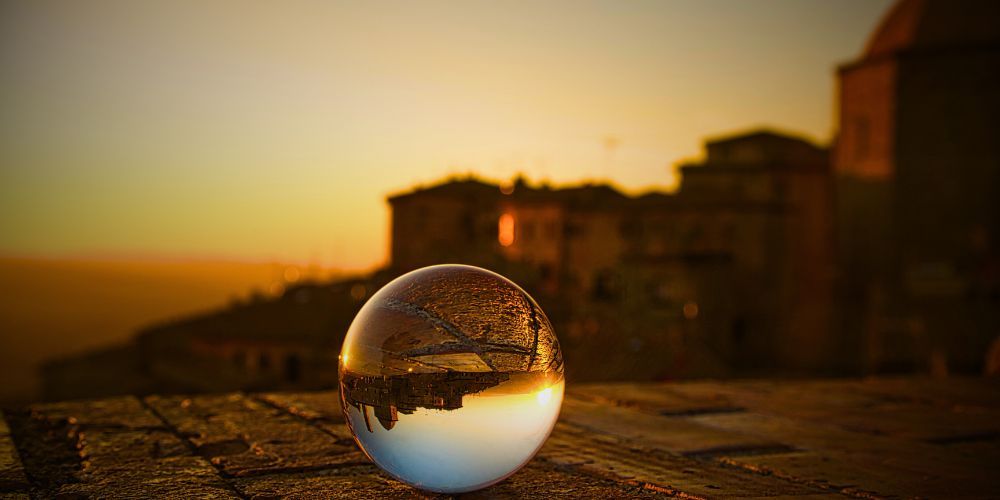
Finally, here we are in Volterra, a wonderful village that encloses the most authentic spirit of Tuscany within its walls, its historic buildings and its places. Yes, because here the history of this region has peeked out many times, always leaving its mark: from the Etruscans age when it was a city-state to the Roman era, of which there are important remains, passing especially through the Middle Ages and the Renaissance which marked its definitive rise as the center of political and religious power of that period, especially under the control of the Medici family of Florence.
We are about to plunge into history for real: discover with us what to see in Volterra by exploring the city's most evocative attractions step by step. Some of these, such as the majestic Palazzo dei Priori and the Roman archaeological sites are included in the Volterra Pass package, for further information click the button below!
Buy now your Volterra PassWhat to see in Volterra: the Cathedral, the churches and the parishes

Perfect, now we are truly ready to begin this new adventure discovering this gem of Tuscany! Our guide on what to see in Volterra begins from an iconic place in the village: the Cathedral of Volterra dedicated to the Assumption of Mary.
It’s the most important religious building in Volterra and certainly among the places of historical and artistic interest that mostly attract visitors. It was built between the 1100s and 1200s in medieval Romanesque style, but next works carried out between 1400s and 1700s contributed to shape the current profile of this church, especially for what concerns its Renaissance bell tower and interior decorations of Baroque inspiration. Furthermore, inside it is possible to admire valuable works of sacred art such as some terracotta statues and canvases by Italian and foreign painters dating back to 1500s, but above all the polychrome wooden sculpture from the 1200s representing the famous episode of the deposition of Jesus from the cross.
In addition to the Cathedral, here in Volterra there are many other churches, chapels and sacred places, both placed within the town center and in rural areas. In your tour through the alleys of the village and its surroundings we recommend you also visit these interesting attractions, including Church of San Lino, Chapel of Croce di Giorno (Morning Cross), Pieve della Nera and Badia of S. Giusto, Clemente and Salvatore.
Palazzo dei Priori and other historic buildings

The second stage of the tour around Volterra takes us to Palazzo dei Priori, a pure example of majesty, beauty and history, above all. Built during 1200s, this building is in fact the oldest municipal palace all over Tuscany and since the first day it has hosted the political, administrative and also artistic life of the city and its surroundings within its chambers.
Palazzo dei Priori is made entirely of stone, according to an architectural style that recalls the power of fortresses, with its battlements and its tower, and shows on its walls the coats of arms of some families such as the Bertini, the Corbinelli, the Del Benino and the Della Stufa. Inside, the council chamber is particularly interesting and beautiful: a wonderful space entirely frescoed and furnished with great elegance housing important original artworks dating back to 1300s and 1400s.
In the past it was also the official seat of the town’s art gallery, subsequently transferred with the alabaster museum (which we will cover later) at Palazzo Minucci-Solaini, officially founded around the beginning of 1500s. Among the other historic buildings to visit in Volterra, especially staying in the beautiful Piazza dei Priori, we also suggest the proud Palazzo Pretorio.
The Medici fortress

Speaking of historic buildings, in a medieval village like Volterra we all expect to see at least one castle, right? Well, the castle is there, it exists: the Medici fortress!
This impressive building has always had the advantage of instilling fear in anyone who observed it from afar, nestling itself in the wonderful landscape of Tuscany countryside like a true colossus impossible to overcome and defeat.
This masterpiece of military architecture is the result of over a century of work: in fact, the castle was made of two fortresses, the Rocca Vecchia (Old Fortress, or Cassero) completed in 1342 by the local governors of that age and the Rocca Nuova (New Fortress, or Mastio) completed in 1474, following the conquest of Volterra by Florence during the lordship of Lorenzo the Magnificent de' Medici.
Today the Medici fortress of Volterra serves as a prison and therefore, for obvious reasons, it is not possible to visit it inside except on special occasions and limited to only a few areas of the building.
The walls and gates of Volterra
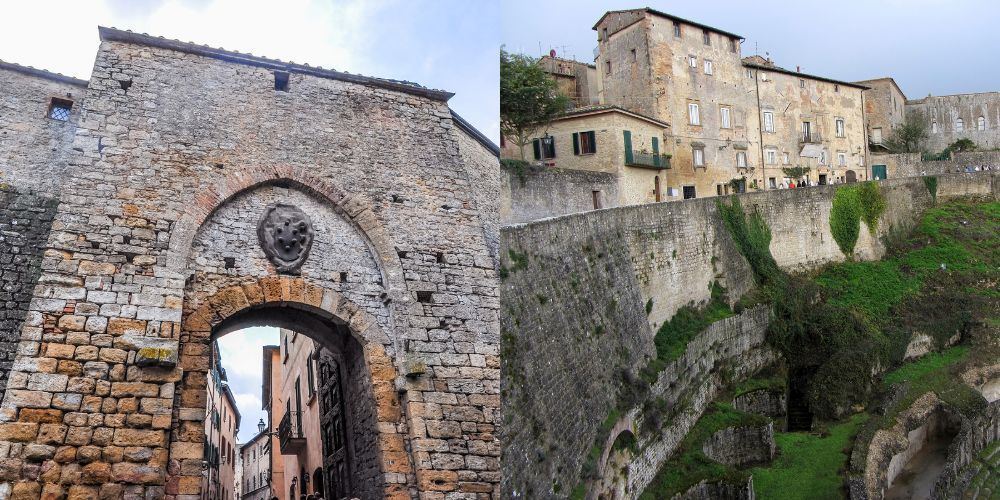
Like any self-respecting medieval town, Volterra is provided with a system of walls and gates which, if in the past had the purpose of defending the population from possible attacks, today represents instead an important proof of to the passage of history in this corner of Tuscany.
The oldest walls of Volterra in fact date back to the Etruscan era, more or less around the 4th century BC, and protected the village above all from attacks by the Celts from the North and the Romans from the South. Much later, in the heart of the Middle Ages (around 1200s), the imposing defensive architecture of the city was expanded and improved, effectively tracing the boundaries of the newly established municipality.
Naturally, with such an ancient layout of walls developed over the centuries, Volterra is a town that has numerous access gates too: one of the oldest and most important is Porta dell'Arco, a part of the first Etruscan walls; among the other gates to look for in the village we suggest Porta a Selci near the Medici fortress, Porta Diana, Porta San Felice and Porta Docciola.
Museums of Volterra: from the Etruscans to alabaster
Let's now take a leap to discover the interesting museums of Volterra, a village whose historical and cultural heritage is a real history book to plunge into.
The first one to visit is the Guarnacci Etruscan Museum, a truly impressive exhibition of finds and evocative evidences of the civilization of ancient Etruria divided into 38 rooms following an educational path that traces the most important stages in the history of ancient Velathri (Volterra). Here you can admire above all the Stele of Avile Tite and the curious bronze sculpture Ombra della Sera (Evening Shadow).
At Palazzo Minucci-Solaini, however, it is possible to visit both the city art gallery, which houses dozens of works of great value and especially paintings and canvases of sacred art, and the evocative Alabaster Ecomuseum: the latter best enhances the artisan tradition of Volterra relating to the processing of this particular type of ornamental rock and, inside, presents ancient and contemporary artisan works telling in detail the processes of working alabaster in the workshop.
Roman age archaeological sites in Volterra
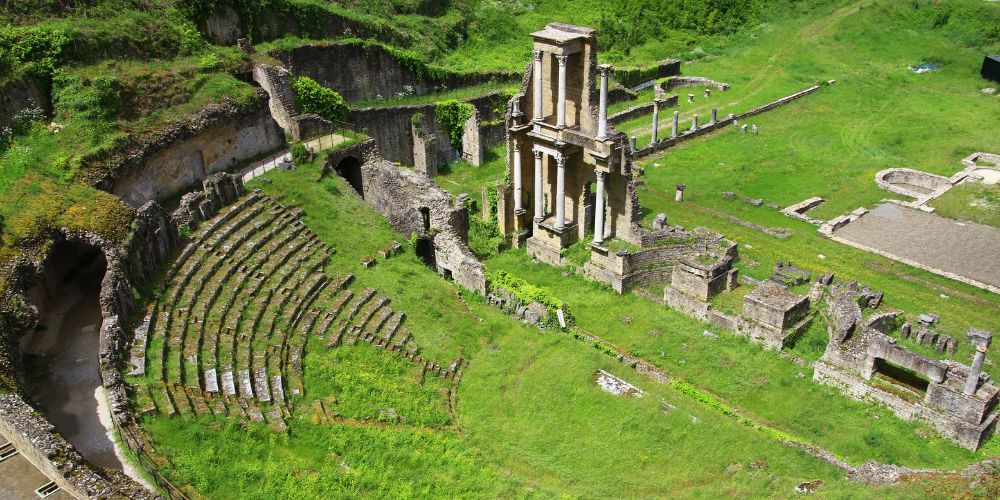
Still speaking of museums, Volterra can be considered an open-air museum due to the presence of its majestic archaeological sites, dating back mainly to Roman age.
The most important site in the area is certainly the Roman Theater of Vallebuona, discovered during excavations conducted in the 1950s. This colossal structure, built to fit into the natural slope on which it stands, probably dates back to around the 1st century BC. and it seems that its construction took place at the behest of the Caecinae family. From the studies done about this place, the site seems to have remained in use as a theater until the 3rd century AD, when it was converted into a thermal bath area, before being partially incorporated within the medieval walls.
But the surprises are not over. Recently, in 2015, not far from the Theater was found an Amphitheater of 1st century AD with an estimated 8k-10k people capacity, whose excavation, collection, study and classification of finds and remains are still ongoing.
The cliffs of Volterra
As seen, here in Volterra there has always been an important bond between the natural conformation of the territory and the human landscape, a union that significantly characterizes the panorama of this land.
One of these places responds to the name of cliffs of Volterra: rock formations between Val di Cecina and Val dell'Era which cover around 90 hectares in the territory of this village, offering to the most adventurous visitors and hiking lovers an unmissable opportunity to enjoy unique views in the evocative setting of Tuscany. Near the cliffs there are also the ancient Etruscan walls of Berniona.
Volterra, what to do: art, culture and folklore
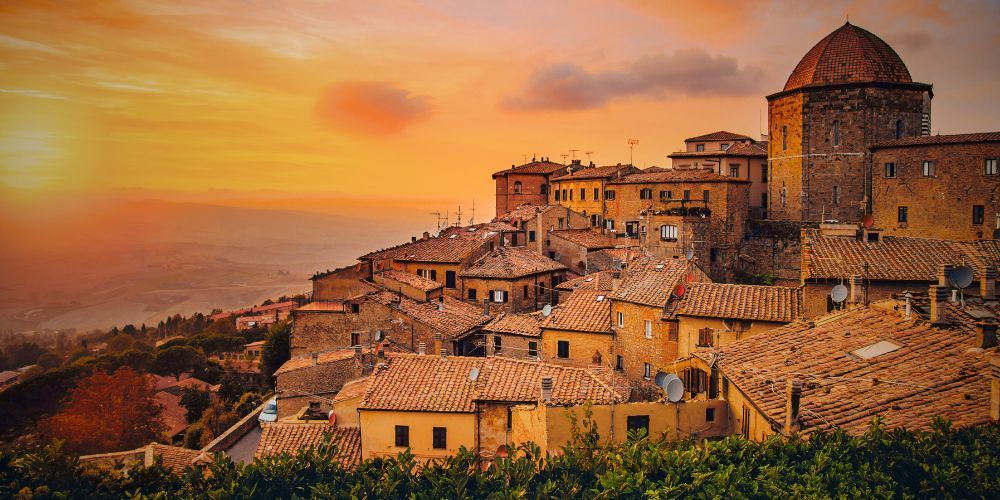
How many fantastic attractions to see in Volterra! But at this point it is legitimate to ask: what in particular should we do? Well, we thought about this too. Our journey to discover Tuscany villages is not over here!
Every year numerous events and celebrations are held in Volterra that recall its rich history, also and above all the artistic and humanistic vocation of the city. Among these stand out VolterraJazz, a summer music festival; VolterrArte, a contemporary art fair that accompanies the village from spring to autumn; but above all VolterraTeatro, the multidisciplinary artistic event that mixes theatre, music, dance, poetry and cultures.
For what regards the folkloristic events of Volterra, we mainly remember the historical parades, tournaments and medieval-style jousts: Ut Armentur Balistarii, a crossbow shooting competition held on the Sunday before June 2nd; Palio del Cero, a tug of war competition where the city districts compete, on June 2nd; and above all Volterra A.D. 1398, a true medieval summer festival held on the second and third Sundays of August. Hey, if you like the Middle Ages, we are sure you will like this fun fact about one of the most famous swords of all time!
Over the years, Volterra has also established itself as an important icon of international pop culture, increasingly becoming the setting, physical or imaginary, of cinematographic and literary productions. Any examples? Let's think of the cult film Ritratto di Donna Velata, passing through the TV series dedicated to Medici and even the film adaptation of the Japanese manga Fullmetal Alchemist. Concerning the world of books, there are some interesting curiosities: in fact, if on the one hand Volterra is part of the literary setting of the novel Forse che sì, Forse che no by Gabriele D'Annunzio, on the other hand the village is even mentioned in the novels of the Twilight series as the homeland of some vampires!
Volterra, what to do in the surroundings: destination San Gimignano
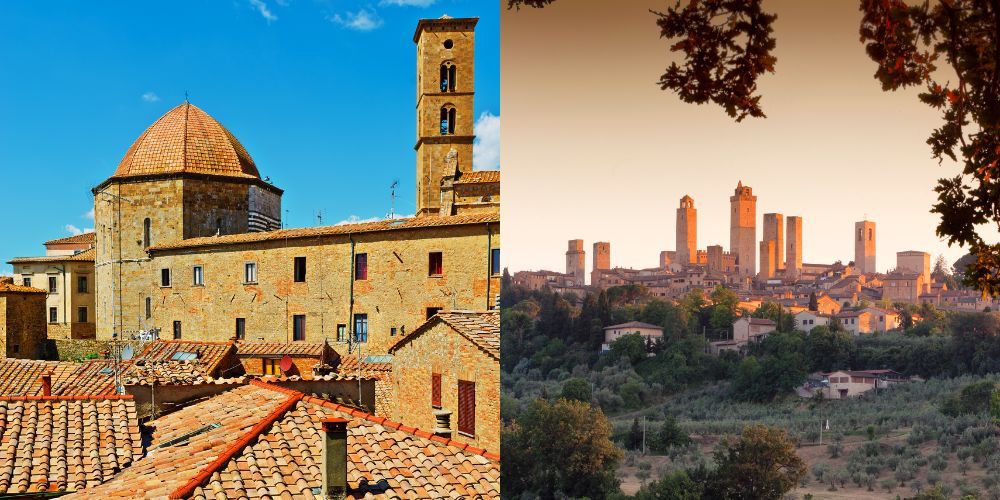
After your visit to Volterra, do you still want to travel across Tuscany? Well, we have for you two fantastic itineraries leveraging of the convenience and advantages of our tourist packages!
Our first stage is San Gimignano. To get there by car starting from Volterra, you need to take SS68 up to Castel San Gimignano and continue on SP47 until your destination.
And here we are in San Gimignano! If you want to experience an unforgettable journey in this splendid pearl of Tuscany, check out our city pass below!
Buy now your San Gimignano PassVolterra, what to do in the surroundings: destination Florence
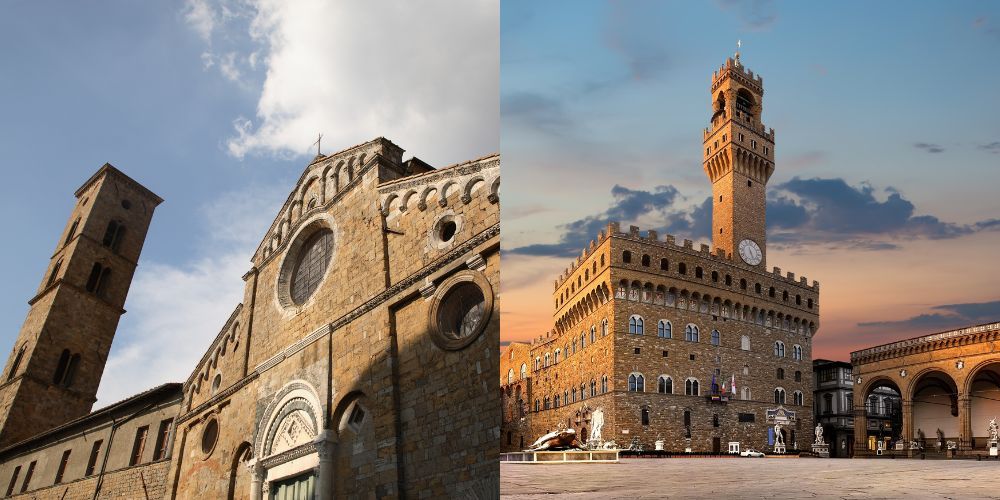
Let's now move on to the second stage: Florence! To reach this wonderful city of art starting from Volterra you can get back to the directions provided in a previous paragraph. However, don't miss our other super interesting guides to best experience the capital of Tuscany: we suggest to check out the most characteristic things to do and the best places to eat!
Are you looking for an all-inclusive solution for your trip to Florence? Take a look at the city pass for the city of lily, the best of tourism in Tuscany to give you a fantastic experience to tell!
Buy now your Florence PassAbout the author
Written on 03/11/2023

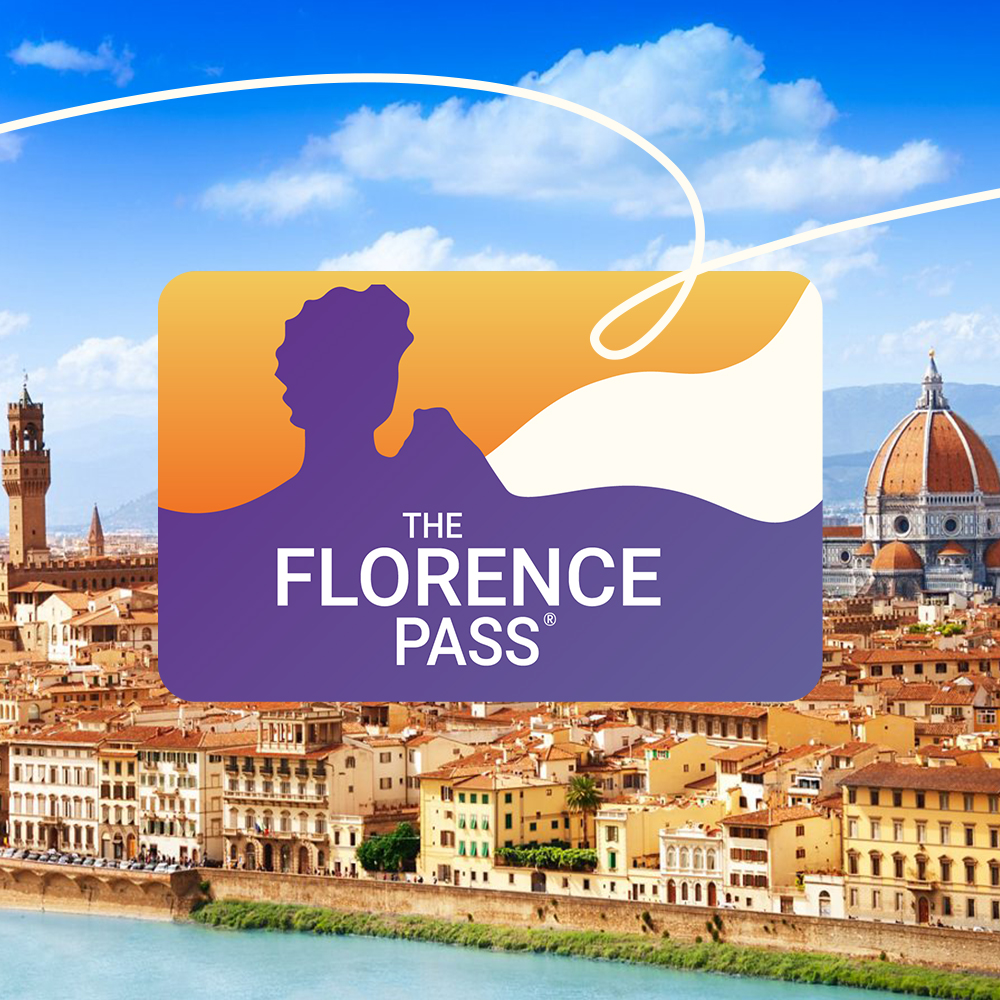
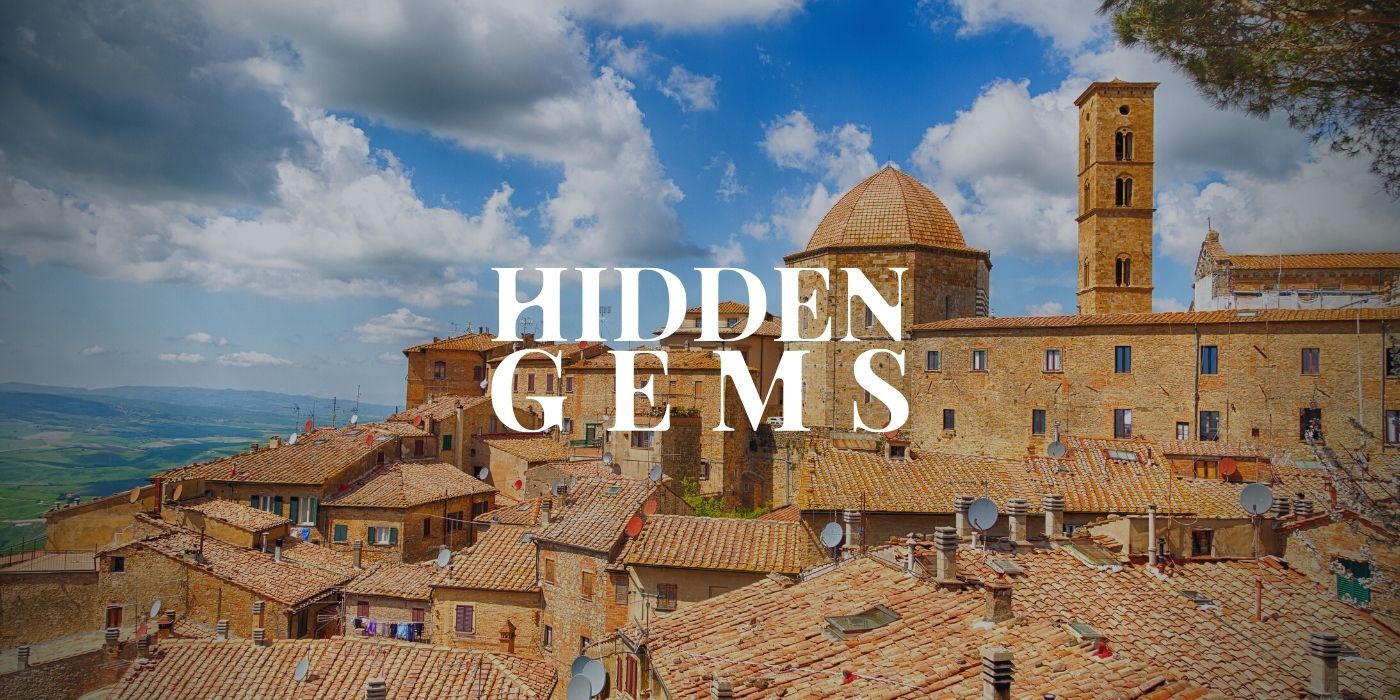

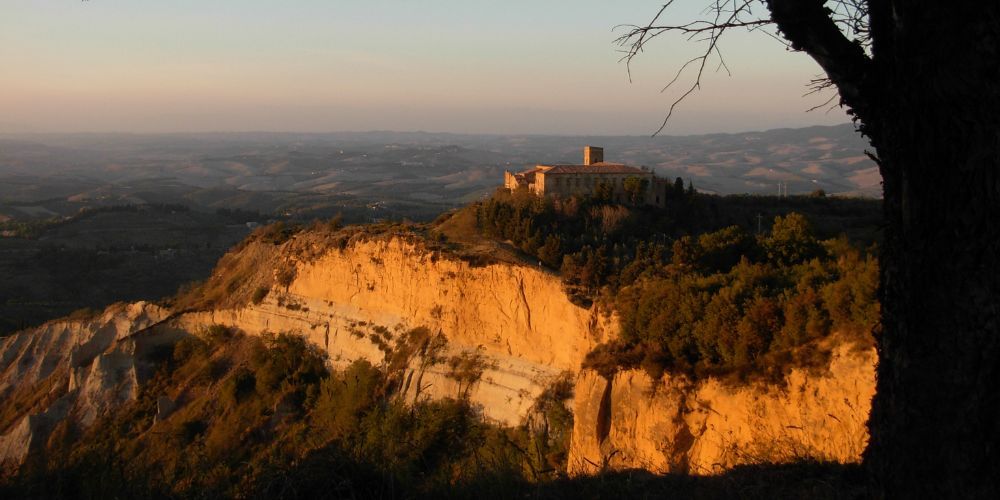

Massimiliano Antonio Primi
Travel with us through the Tuscany villages discovering what to see in Volterra, iconic gem of this region rich in history and culture next to Pisa.